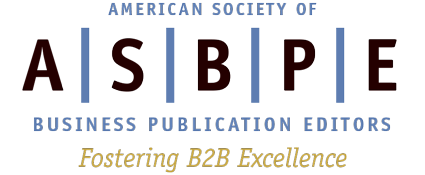By Howard Rauch
President, Editorial Solutions, Inc.
Finding and keeping star editors clearly is of greater concern today. Multi-tasking – as in being required to add website tasks to existing job descriptions – has stirred turmoil at all editorial levels. Circumstances are more tolerable when senior management actively takes steps to enhance editorial careers. I was fortunate to work at such a company before starting a consulting business 18 years ago. Here are some positive practices we adhered to during my tenure as VP/editorial director:
Show them the money. Anyone who believes that financial growth is not a prime motivator when it comes to staff recruitment is nuts. Moreover, any ad you run that doesn’t mention a specific salary – as opposed to posting some ridiculously wide range – is a time-waster. At our company, we talked dollars during the first interview. For recent graduates, we outlined a three-year growth plan, including salary hikes and title changes along the way. In my current business, I hear frequently from college grads as well as experienced people seeking advice on career direction. Many of them tell me that discussions about money are deliberately deferred until follow-up interviews. This is an error, especially if you are stalling until you’ve seen lots of applicants before you fix a specific salary to the job.
Use an interviewing checklist when screening applicants. My list itemized 13 characteristics I evaluated during every meeting. During the discussion, I scored the candidate on a 0-3 basis for each factor. This analysis often was a useful tie-breaker when it came to deciding among several equally-promising potential stars.
Make life interesting right from the start. During performance analysis projects, I often find that obviously talented beginners are buried in grunt work. It doesn’t take long for them to seek greener pastures. Incidentally, that decision has nothing to do with money.
Create new jobs for talented up-and-comers who are stagnating in their current roles. Such positions, of course, should be accompanied by a salary upgrade. At our company, we built in specialty slots where editors focused on such areas as management and security. One very bright editor was promoted to corporate Washington editor. She wrote five or six articles per month for various magazines, frequently based on face-to-face interviews with legislators and authoritative department heads. Another idea that worked well for us was assigning a bright guy to be our East Coast field editor. This position obviously reflects a willingness to travel our editors, a policy apparently less common today.
Set aside training time and never vary from that schedule. No staff is too small when it comes to a regular dose of training. When I was editor of a magazine where my “staff” was another person, that individual received a one-hour orientation every day during his or her first ten days on the job. I continued to follow that practice in subsequent top editor roles.
All of the above activities occurred during an exciting surge for our company. While I was there, we increased our stable from five to 20 publications. Thus, we were in a position to deliver on all our promises of growth. Several people who joined us as trainees moved up to editor-in-chief jobs within five years. In an environment of stagnant growth or downsizing – such as 2008 – several of my policies might encounter resistance. However, all of them have some merit, no matter what your current situation.
